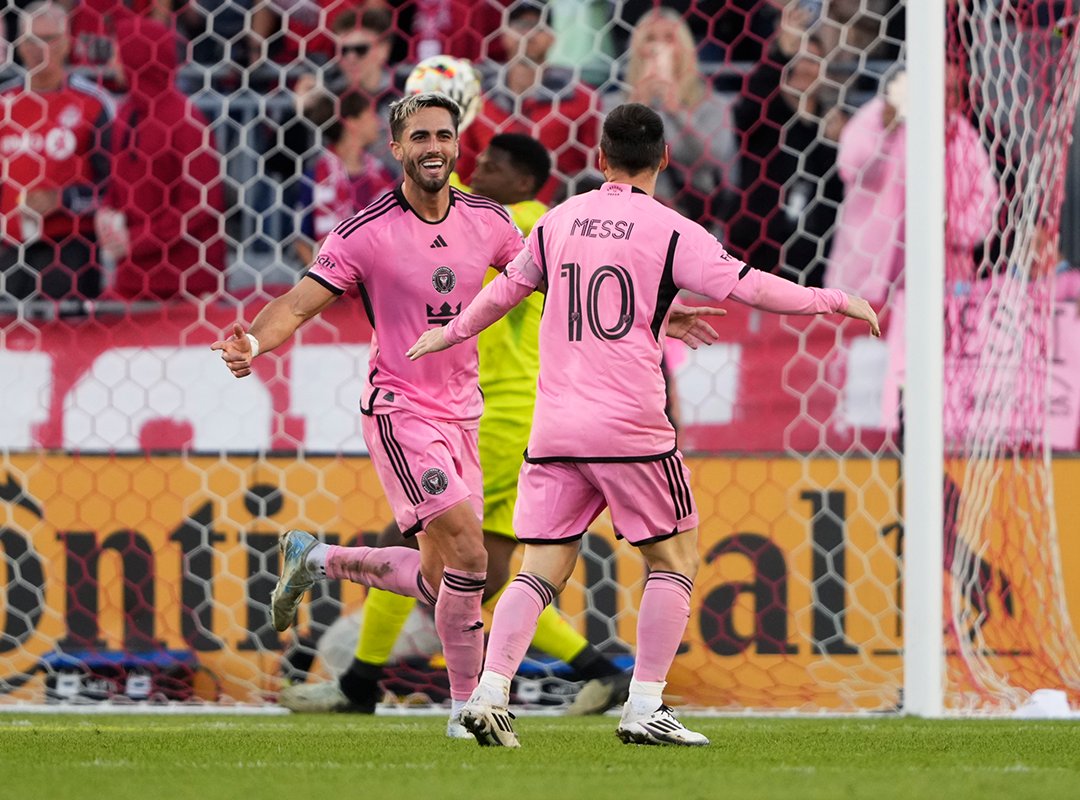What Does A Red Card Mean In Soccer?


Table of Contents
Picture this: you’re at a soccer match, and suddenly the referee pulls out a red card. The player is sent off the field, and the crowd erupts in cheers or boos. But what does it all mean? In soccer, a red card is one of the most serious penalties a player can receive.
It’s a game-changer that can affect the outcome of the match and even a player’s entire career. So, what exactly is a red card in soccer?
In this article, we’ll unpack the ins and outs of this infamous card and what it means for players and fans alike.
What does a red card mean in soccer?
In soccer, a red card means that a player has committed a serious offense or misconduct and must leave the field immediately.
It is the most severe penalty a player can receive, and it results in the player being sent off the field and being unable to return for the rest of the game.
The specific offenses that can result in a red card vary, but they can include violent conduct, serious foul play, and abusive language towards officials or other players.
Additionally, a red card may result in further disciplinary action, such as a suspension or fine.
How does a red card work in soccer?
When a referee shows a red card to a player, they must leave the field immediately without any substitutions allowed. The team then plays with one less player for the remainder of the game, which often gives the opponent an advantage.
Yellow vs Red Cards: Understanding the Differences
Yellow cards and red cards are two of the most important aspects of soccer. They are given to players who commit fouls or engage in unsportsmanlike behavior, and they can have a significant impact on the outcome of the game. In this section, we will discuss the differences between yellow and red cards.
Warning for Minor Fouls or Unsportsmanlike Behavior
Yellow cards are given as a warning to players who commit minor fouls or unsportsmanlike behavior. These offenses may include things like tripping an opponent, holding onto their jersey, or arguing with the referee. While these actions may not be severe enough to warrant immediate dismissal from the game, they still need to be addressed to maintain fair play.
If a player receives two yellow cards in a single game, they will be shown a red card and sent off the field. This is known as a “sending-off offense,” and it means that the player’s team will have to continue playing with one fewer player for the remainder of the game.
More Serious Offenses
Red cards, on the other hand, are given for more serious offenses. These may include things like violent conduct (such as punching another player), intentionally handling the ball (to prevent an obvious goal-scoring opportunity), or denying an obvious goal-scoring opportunity through fouling (such as pulling down an opponent in front of goal).
If a player receives a red card, they will be immediately sent off the field and cannot be replaced by a substitute. This means that their team will have to play with one fewer player for the remainder of the game.
Different Categories of Offenses
Referees use different categories of offenses to determine whether to give a yellow or red card. Some offenses may be more subjective than others – for example, what one referee considers “reckless” might not be considered so by another referee.
The decision to give a yellow or red card can have a significant impact on the outcome of the game. Teams playing with fewer players are at a disadvantage, and they may struggle to keep up with their opponents. In some cases, a single red card can completely change the course of the game.
Types of Offenses That Can Result in a Red Card
Violent Conduct
One of the most common offenses that can result in a red card is violent conduct. This includes any physical attack on an opponent, such as punching, kicking, or headbutting.
These actions are considered dangerous and have no place in soccer matches. The severity of the offense is taken into account when deciding whether to issue a red card.
For example, if a soccer player punches another player with full force, they will likely receive a red card immediately. However, if the action was not as severe, then the referee may give a yellow card instead.
Denying an Obvious Goal-Scoring Opportunity
Another offense that can lead to a red card is denying an obvious goal-scoring opportunity. This means that if a player commits an offense that prevents their opponent from scoring an obvious goal, they will be sent off with a red card. For example, if a defender trips an attacker who was through on goal and had only the goalkeeper to beat, then they will be shown a red card for denying an obvious goal-scoring opportunity.
Using Offensive or Insulting Language
Using offensive or insulting language towards the referee or other players can also result in a red card. This type of behavior is unacceptable and disrespectful to those involved in the game. Referees are trained to recognize this type of behavior and take appropriate action when necessary.
Intentionally Handling the Ball
Lastly, intentionally handling the ball to prevent a goal can lead to receiving a red card. If it is clear that the soccer player deliberately used their hand or arm to stop the ball from going into their own net or prevent their opponent from scoring, they will be issued with this punishment.
What Happens When a Player Receives a Red Card in Soccer?
When a player receives a red card in soccer, they are immediately sent off the field and cannot be replaced by a substitute. This means that their team will have to play with one less player for the remainder of the game, making it more difficult to win. The player who received the red card will be suspended for the next game, regardless of whether it was a straight red or two yellow cards.
This suspension can have significant consequences for both the player and their team. The player will miss out on an important match, potentially impacting their team’s performance and chances of winning. They may also face additional disciplinary action from their club or league, depending on the severity of their offense.
Missing More Than One Game in Tournaments
If a player receives a red card during a tournament or knockout competition, they may miss more than one game depending on the rules of the competition. For example, in some tournaments, players who receive a red card may be suspended for multiple games or even for the remainder of the tournament.
This can have serious implications for both individual players and teams competing in these events. A key player missing several games due to suspension could significantly impact their team’s chances of advancing further in the tournament or even winning it all.
Consequences of Receiving a Red Card in Soccer
When a player receives a red card in soccer, it means they have been ejected from the game. This is a serious consequence that can significantly impact the team’s chances of winning. The referee will show the red card to the player and signal for them to leave the field immediately. The player cannot be replaced by another teammate, which means that their team must play with one less player for the remainder of the game.
Playing with One Less Player
Playing with one less player can be challenging for any team in soccer. It puts extra pressure on the remaining players to defend their goal and attack their opponents without being able to rely on their full squad. The opposing team may take advantage of this situation and try to score more goals since there are fewer defenders on the field.
Suspended from Playing in Next Game
The consequences of receiving a red card in soccer extend beyond just being ejected from the current game. The player who received the red card is suspended from playing in their team’s next game as well. This means that they will miss at least one match due to their actions on the field. Depending on how severe their offense was, they could receive a longer suspension or even expulsion from the league if they receive multiple red cards during a season.
How Many Yellow Cards Equal a Red Card?
When watching a soccer game, it is not uncommon to see players receive yellow cards. These cautions are given by the referee to players who have committed minor fouls or misconduct during the game. However, if a player continues to commit fouls or misconduct after receiving one yellow card, they may receive another one – the second yellow card. This leads us to the question: how many yellow cards equal a red card?
In most cases, a player who receives two yellow cards within the same match will be shown a red card and sent off the field. This means that they cannot continue playing for the rest of the game and their team must play with one less player. The second yellow card is given for another cautionable offense after the first yellow card.
The total number of yellow cards that lead to a red card varies depending on the competition and rules governing it. For example, in some competitions, such as Major League Soccer (MLS), if a player receives five yellow cards within ten games, they will be suspended for one game. If they receive ten yellow cards within 16 games, they will be suspended for an additional two games.
In other competitions, such as UEFA Champions League and Europa League matches, if a player receives three or more yellow cards in different matches throughout the competition stages up until quarter-finals (inclusive), he/she will be suspended from playing in his/her team’s next match in that competition.
One interesting case study involves former Manchester United midfielder Paul Scholes. In 2008-2009 season of Premier League matches alone, he received ten yellow cards which led him to being suspended from playing in two consecutive league matches.
The Player Who Has Received the Most Red Cards in Soccer
Gerardo Bedoya, a Colombian midfielder, holds the record for receiving the most red cards in soccer history. Throughout his career, he was sent off a total of 46 times. It is an astonishing number that shows how aggressive and reckless he was on the field. However, it is worth noting that receiving multiple red cards does not necessarily mean a player is dirty or violent.
Bedoya played for several clubs during his career, including Deportivo Cali, Millionarios FC, and Independiente Medellin. He was known for his tough tackling and physical style of play that often resulted in him getting booked or sent off. Despite this reputation, Bedoya was also a skillful player who could score goals and create chances for his team.
Lionel Messi’s Record
In contrast to Bedoya’s record-breaking number of red cards, Lionel Messi has only received two red cards in his entire career. This statistic speaks volumes about Messi’s discipline and professionalism on the field. One of Messi’s red cards came in 2005 during a match against Hungary’s U20 team. At the time, he was just 18 years old and playing for Argentina’s youth team.
Messi received another red card in 2019 during a match against Chile in the Copa America tournament. In this instance, he was involved in an altercation with Chilean defender Gary Medel that led to both players being sent off. Despite these rare instances of misconduct, Messi remains one of the greatest footballers of all time due to his impressive skills and sportsmanship.
Sergio Ramos’ Record
Another player who has received a significant number of red cards is Sergio Ramos, a Spanish defender who has been sent off 26 times throughout his career. Ramos is known for his aggressive defending style and willingness to take risks on the field. While some may view his high number of red cards as a negative aspect of his career, others argue that it is a testament to his passion and commitment to the game.
Appeals Process for Red Cards in Soccer
Appealing a red card in soccer can be a crucial step for players, especially if the decision was made in error. The appeals process differs by league and organization, but there are some general guidelines that apply to most cases. Below we will discuss the appeals process for red cards in soccer.
Appeal Timeframe
In most leagues, players have a limited timeframe to appeal a red card after the match. This time frame is usually within 24-48 hours of the game’s conclusion. It is essential to note that appealing a yellow card is not allowed under any circumstances.
Disciplinary Committee or Independent Panel
The player’s appeal will be heard by either a disciplinary committee or an independent panel, depending on the league’s rules and regulations. The disciplinary committee comprises members who are appointed by the league and have experience with soccer rules and regulations. On the other hand, an independent panel consists of individuals who do not have any affiliation with the league or teams involved in the incident.
Reviewing Incident
The committee or independent panel will review footage of the incident leading up to the red card decision. They will analyze every aspect of what happened before making their final decision. In most cases, they may also interview witnesses, including other players or referees present at that time.
Upholding or Overturning Red Card Decision
After reviewing all available evidence related to an incident leading up to a red card decision, it is then decided whether to uphold or overturn it based on facts presented during this hearing process. If there is enough evidence supporting your case that you were wrongly given a red card, then it could get overturned entirely.
Successful Appeal Outcome
If your appeal is successful, you may still face punishment but less than what you would have received if your original suspension had been upheld entirely. For instance, instead of serving three games suspension for receiving two yellow cards in consecutive matches resulting in one red card, the committee may reduce it to one or two games.
Understanding Direct and Indirect Free Kicks After a Red Card
Direct and Indirect Free Kicks After a Red Card
Direct and indirect free kicks are two of the most common types of set pieces in soccer. They occur after a foul has been committed, and depending on the severity of the offense, they can result in a red card. In this section, we will discuss what happens after a red card is given and how it affects the type of free kick awarded to the opposing team.
Direct Free Kick or Penalty Kick
A direct free kick or penalty kick is awarded to the opposing team when a player receives a red card for committing a serious foul. This means that the fouled team can take an uncontested shot at goal from a predetermined spot on the field. The location of where the foul occurred determines whether it’s taken as a direct free kick or penalty kick.
For instance, if the foul takes place inside the box, it results in a penalty kick. On the other hand, if it occurs outside of the box but within shooting range, it results in a direct free kick. A direct free-kick gives players more options as they can either shoot directly at goal or pass to another teammate who can then take their shot.
Indirect Free Kick
If an offense leading to a red card is deemed less severe than those requiring direct free kicks or penalties, then an indirect free-kick is awarded instead. An indirect-free means that players cannot score directly from it unless someone else touches it before entering into goal post.
An example would be if one player commits an obstruction offense by blocking another player’s path without making contact with them resulting in receiving red cards; this would lead to an indirect-free being given rather than direct-free.
Yellow Cards Leading To Red Cards
If a player receives two yellow cards during playtime which resulted in receiving red cards due to their accumulated offenses such as unsportsmanlike conduct or persistent infringement of rules; then direct-free kicks are usually given to the opposing team. However, if the foul occurs outside of shooting range, it would result in an indirect-free kick instead.
The Importance of Fair Play and Discipline in Soccer
In soccer, fair play and discipline are essential for maintaining the integrity of the game. The importance of these values cannot be overstated, as they help to ensure that players compete in a safe and respectful environment.
When players receive red cards, it is often because they have committed serious offenses on the field. These offenses can range from violent conduct to deliberate fouls or unsporting behavior. In such cases, referees have no choice but to issue a red card to the offending player.
The consequences of receiving a red card can be severe. Players who receive red cards are typically suspended for several games, which can have a significant impact on their team’s performance. Players who accumulate multiple red cards may face even longer suspensions or fines.
However, it is important to remember that fair play and discipline go beyond simply avoiding red cards. Players must also strive to compete with respect for their opponents and the rules of the game. This means refraining from diving or other forms of simulation, as well as avoiding unsporting behavior such as taunting or trash talking.
Ultimately, soccer is a sport that rewards skill and sportsmanship above all else. While winning is certainly important, it should never come at the expense of fair play and respect for one’s opponents. By upholding these values both on and off the field, players can help ensure that soccer remains a beautiful game for generations to come.
What Does A Red Card Mean In Soccer? – FAQs
How long is a red card in football?
A red card in soccer means that a player is ejected from the game immediately and cannot be replaced. The player must leave the field and cannot return to the game. However, the length of the suspension that follows a red card can vary depending on the severity of the offense committed.
How many games are you out for if you get a red card in soccer?
The number of games a player is suspended for after receiving a red card in soccer can vary depending on the competition and the severity of the offense. In general, a red card usually results in a one- to three-game suspension.
What is the difference between a yellow card and a red card in soccer?
A yellow card is a warning given to a player for committing a minor foul or for unsporting behavior. If a player receives two yellow cards in the same game, they will be shown a red card and sent off. A red card, on the other hand, is given for a more serious offense and results in the player being immediately sent off the field.
What is the punishment for red card?
The punishment for a red card in soccer is a suspension from play. The length of the suspension can vary depending on the competition and the severity of the offense committed.
Is a straight red card a 3 match ban?
Not necessarily. The length of the suspension that follows a red card can vary depending on the competition and the severity of the offense committed. A straight red card, which is given without a prior yellow card, is typically given for a more serious offense and can result in a longer suspension.
What is a blue card in soccer?
A blue card is a relatively new card that is used in some indoor soccer leagues. It is similar to a yellow card in that it is a warning for a minor offense, but it also requires the player to leave the field for a set amount of time, usually two minutes.
What is black card in football?
A black card is a relatively new card that is used in some Gaelic football competitions in Ireland. It is similar to a red card in that it results in the player being sent off the field, but it also results in the player being permanently replaced and not allowed to return to the game.










